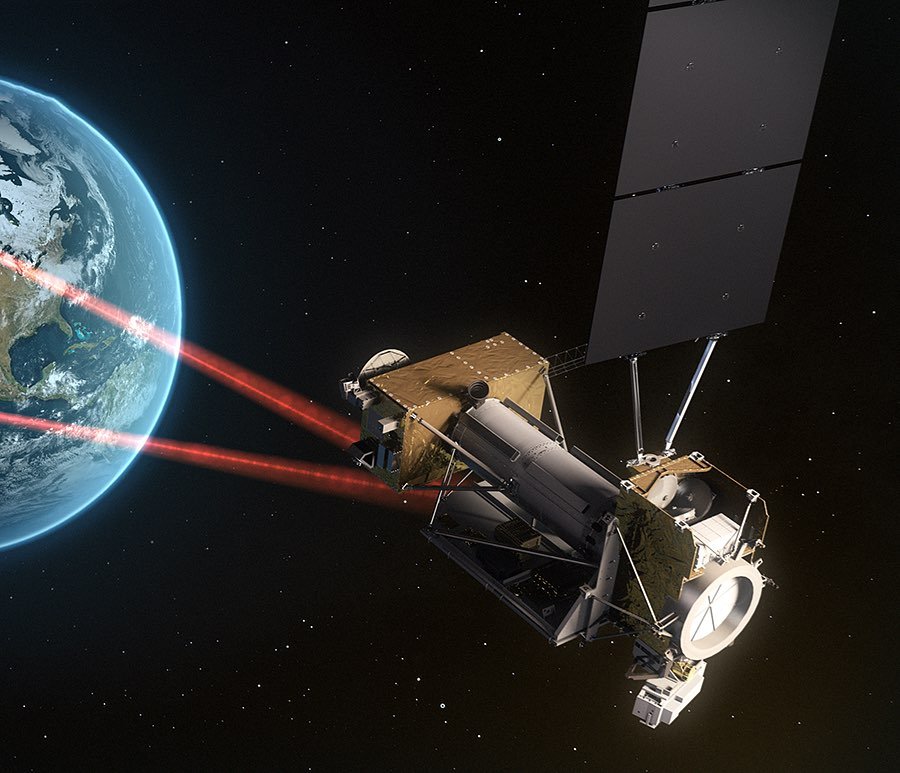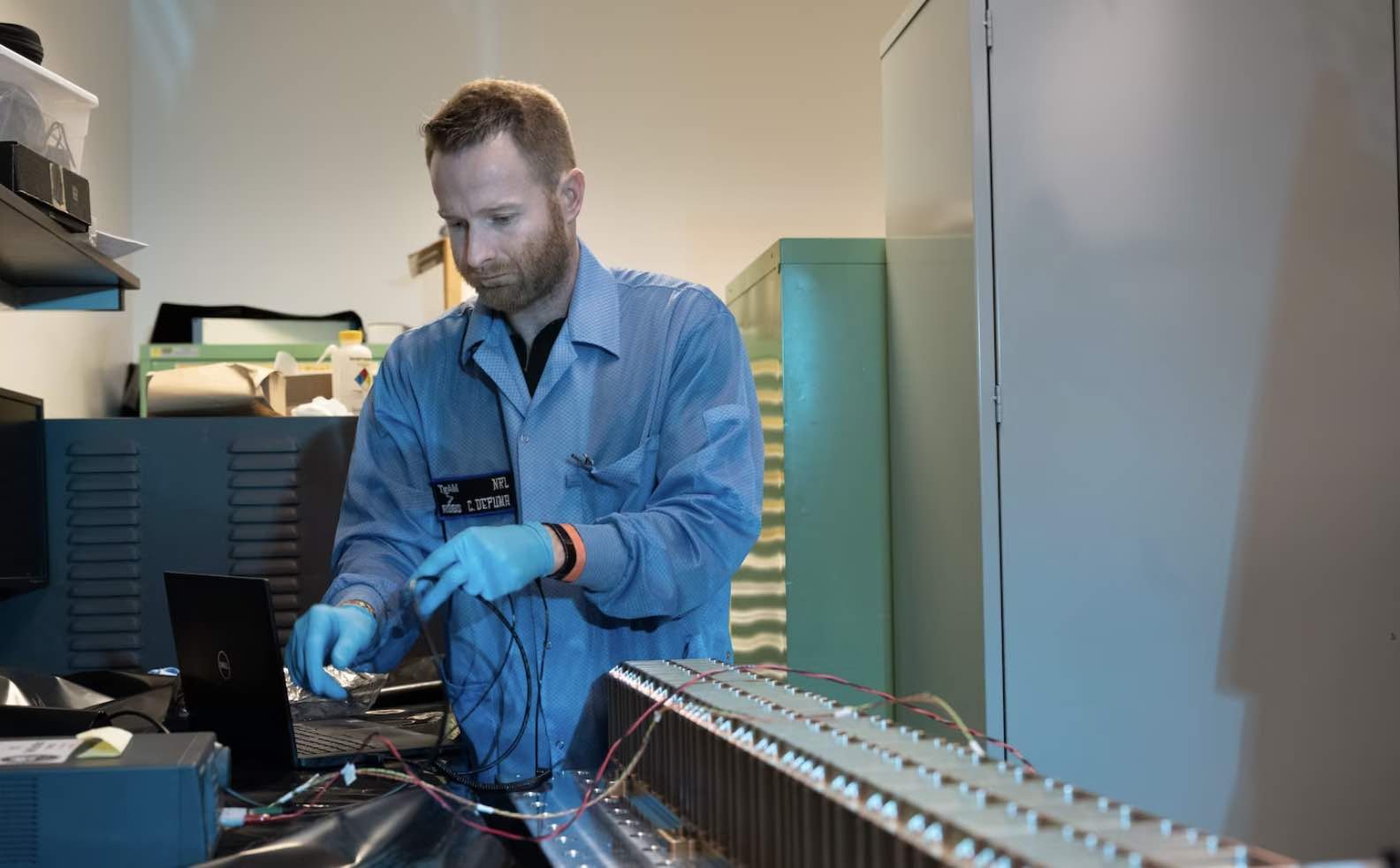

Welcome to this week’s installment of The Intelligence Brief… with the recent announcement by the Naval Research Laboratory that its innovative Space Wireless Energy Laser Link (SWELL) will soon embark on its early testing phase, this week we’ll be analyzing 1) the NRL’s SWELL experiment announcement, 2) what laser power beaming technology could help facilitate for future space missions, and 3) the benefits of wireless energy transfer both in space and on Earth.
Sign up to get The Intelligence Brief newsletter sent to your inbox each week.
Quote of the Week
“The scientific man does not aim at an immediate result. He does not expect that his advanced ideas will be readily taken up. His work is like that of the planter – for the future. His duty is to lay the foundation for those who are to come, and point the way.”
– Nikola Tesla
Latest Stories: Ahead of this week’s analysis, a few of the big stories we’ve covered in recent days include our exclusive investigation into the “unseen killer” behind the mysterious deaths of dozens of cattle in Colorado late last year and what official documents obtained by The Debrief revealed. Elsewhere, our feature report on the DARPA-funded Electric Sky unveils how they are moving closer to making its innovative Whisper Beam power-beaming system a reality.
Podcasts: This week in podcasts from The Debrief, Stephanie Gerk and MJ Banias ask whether organoids dream of electric bandages and other mind-bending possibilities in the latest installment of The Debrief Weekly Report. Meanwhile over on The Micah Hanks Program this week, I spoke with Colorado Parks and Wildlife Northwest Regional Manager Travis Black for an in-depth look into the the potential causes behind Colorado’s mysterious cattle deaths last year. You can subscribe to all of The Debrief’s podcasts, including audio editions of Rebelliously Curious, by heading over to our Podcasts Page.
Video News: Be sure to catch Chrissy Newton’s latest installment of Rebelliously Curious, where she sits down with CEO and Co-Founder of Electric Sky Robert Millman to discuss the “Whisper Beam” and the future of faster, cleaner, quieter, and more economical travel. You can also watch past episodes and other great content from The Debrief on our official YouTube Channel.
With that all behind us, it’s time to shift our focus over to the Naval Research Lab’s quest to bring wireless energy lasers into fruition for space missions, as well as for Earth-based applications.
A Wireless Energy Laser Heads Into Orbit
This week, the United States Naval Research Lab (NRL) announced its plans to deploy a new system that will allow it to use lasers to beam power in space.
The Space Wireless Energy Laser Link, or SWELL, will see its first demonstration in conjunction with a scheduled Pentagon Space Test Program H9 mission to the International Space Station which launched on March 15, according to an NRL news release.


“SWELL is one of several experiments that will launch aboard the SpaceX Dragon cargo vehicle to the ISS for the yearlong mission to collect data during a laser power beaming link in space conditions,” The NRL statement said.
Power Beaming Possibilities
Sponsored by the Office of the Under Secretary of Defense for Acquisition & Sustainment (OUSD (A&S)), the innovative power-beaming experiment will attempt to gauge the viability of using technology to beam power in space using lasers for various space missions and other applications, while also exploring ways the technology might also be useful in fighting energy-related problems on Earth.
The project has seen additional support from the Operational Energy Capability Improvement Fund (OECIF).
Paul Jaffe, Ph.D., SWELL’s Principal Investigator, called the initial rollout of the technology a “modest experiment,” but one which will allow the NRL to focus on ways the technology can be developed and used both for optimal power development and also to do so efficiently across the distances required for space.
“By employing laser transmitters and photovoltaic receivers,” Jaffe said, “power beaming links will be established that will pave the way for rapid, resilient, and flexible energy delivery systems.”
Energy Delivery through Laser Power Beaming
Using electromagnetic waves to deliver energy is beneficial for many reasons, primarily on account of the capability to transfer it almost instantaneously, as there isn’t any requirement for carrying mass.
According to project leaders, laser power beaming could become crucial in terms of being able to power future space missions, and the NRL’s current experiments aim to help facilitate that.
SWELL Program Manager Chris DePuma said the technology is “poised as a critical enabler for power distribution on the moon and elsewhere in space,” calling the demonstration the “next step” in bringing power beaming into use both for future space missions and also for applications on Earth.
Year One and Future Applications
Over the course of the next year, the initial SWELL experiment will allow NRL scientists to collect vital information on the performance of the technology’s hardware while in orbit, allowing the team to gauge the limits of its use in future operations.


One of the key benefits of the technology is that it will one day reduce the payloads required for launches by removing the necessity for carrying energy sources like fuel and batteries, as well as cables and wiring used to transfer energy in traditional electronics, thereby allowing additional space for other resources that future space mission will require.
In an NRL statement, Jaffe said that laser power beaming technologies like SWELL could perform similar functions on the ground, allowing the distribution of power in more efficient ways, and even may one day allow power collected from solar arrays in orbit to be sent back to Earth.
“SWELL is the next step into this new frontier,” Jaffe said.
That concludes this week’s installment of The Intelligence Brief. You can read past editions of The Intelligence Brief at our website, or if you found this installment online, don’t forget to subscribe and get future email editions from us here. Also, if you have a tip or other information you’d like to send along directly to me, you can email me at micah [@] thedebrief [dot] org, or Tweet at me @MicahHanks.


Here are the top stories we’re covering right now…
- DARPA Funded Electric Sky on Threshold of Aviation Revolution with Whisper Beam
Funded by the Defense Advanced Research Projects Agency (DARPA), the folks at Electric Sky are moving closer to revolutionizing electric aviation by making its Whisper Beam power-beaming system a reality.
- The Allegory of the Cave: An Interstellar Interpretation
In this installment of “Our Cosmic Neighborhood,” Harvard astronomer Avi Loeb takes a look at an ancient philosophical dialogue in the context of interstellar artificial intelligence.
- Source of the Sun’s Curious “Heartbeat” is Revealed in Unexpected Discovery
A new study reveals the source of a curious feature of the Sun’s atmosphere that produces a signal pattern that researchers have likened to a human heartbeat.
- New Quantum Computing Study Proposes First-Ever Practical Blueprint for a Verifiable Lab-Created Transversable Wormhole
A recent study has proposed the first-ever practical blueprint for a lab-created wormhole that can verifiably bridge spacetime.
- From the Far Side of the Moon, NASA and the DOE Plan to Search for Signals from the Dark Ages of the Universe
The “Dark Ages of the Universe” will be the focus of a new experiment conducted jointly by NASA and the U.S. Department of Energy (DOE), involving the placement of a new science observatory on the far side of the Moon.
- On the Trail of a Unseen Killer: Questions Linger Over Unexplained Cattle Deaths in Colorado
Documents and interviews with Colorado officials reveal new clues behind the investigation into a wave of unexplained cattle deaths last year.
- Joint American-Italian MAIA Mission Will Be First to Use Satellites to Focus on Public Health and Pollution
MAIA, a cooperation between NASA and ASI, marks a mission first by the space agencies with a satellite mission focused on public health.
- DARPA “Whisper Beam” Will Recharge Drone Swarms Mid-Flight
Robert Millman joins Chrissy to discuss the DARPA “Whisper Beam” and the future of faster, cleaner, quieter, and more economical travel.
- Scientists Call for a Space Junk Treaty to Prevent Future Tragedy from Occurring in Orbit
Scientists are calling for a treaty to protect Earth from space junk resulting from future industries operating in Earth’s orbit.
- French Air and Space Force Event Examines New Challenges Occurring at High Altitudes
On January 9th, the French Air and Space Force (FASF) held an event that examined emerging high-altitude challenges.
- Incident 207: A Tic Tac over Washington, DC, in 1948?
A 1948 UFO event in Washington, DC, may have featured an aircraft resembling the famous “Tic Tac” observed by Carrier Strike Group 11 in 2004.
- Do Organoids Dream of Electric Bandages? This week on The Debrief Weekly Report…
On today’s episode, extremophile bacteria used to generate electricity and biological organoids are discussed.
- 2023 Annual Threat Assessment: Here’s What U.S. Intelligence Says You Need to Know
This week’s newsletter examines an annual report from the ODNI detailing Intelligence Commnunity’s threat forecast for the coming year.
- Galactic Scale Shockwaves Are Rattling Through the Cosmic Web
Australian researchers have measured the effects of massive galactic-scale shockwaves rippling through the cosmic web, a structure that encompasses all of the matter in the known universe.